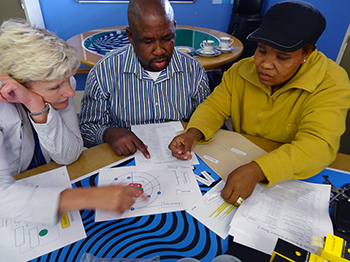
The everyday function and subsequent success of the SPP have come to embody the very essence of the UFS: inspiring excellence; transforming lives. |
Addressing the urgent need for quality education at school level, the University of the Free State (UFS) established the Schools Partnership Project (SPP) in 2012. The aim of the project has been to turn ineffective schools into institutions producing outstanding results, thereby increasing the number and quality of first-year students at the UFS.
Within three years, the SPP has grown to include 68 primary and secondary schools across the Free State and the Sterkspruit area in the Eastern Cape. The programme is headed by Dr Peet Venter and run from the UFS South Campus. Expert mentors assist teachers and principals at these schools on a weekly basis, helping them to excel at their core functions. The programme’s success has been phenomenal.
Learner results from the SPP schools show a marked improvement compared to previous years. Teachers report that they have gained a broader understanding of the subjects they teach. “The university is doing a great job with this programme,” says one of the teachers. “We have developed a lot. We really appreciate this partnership.” Teachers not only gain substantial expertise in areas of planning, presentation, and subject knowledge; an increasing number of them have been receiving promotions, too.
The principals experience similar positive results, and regard the SPP as a productive contribution to their schools. The project has also established closer cooperation between principals and schools. This enables them to achieve common goals, share knowledge, and deal with challenges together.
An added spin-off of the programme has been the increased involvement of parents and care-givers. “We experience much more involvement from the community,” says mentor Danie Nieuwenhuizen. Parents start to take it upon themselves to tidy school grounds, care for vegetable gardens, and prepare food at school feeding schemes. Even the Sustained Silent Reading programme – that supplies magazines to learners – is now having an impact on households and communities. Many homes have never had magazines or other reading material before the reading programme.
The everyday function and subsequent success of the SPP have come to embody the very essence of the UFS: inspiring excellence; transforming lives.